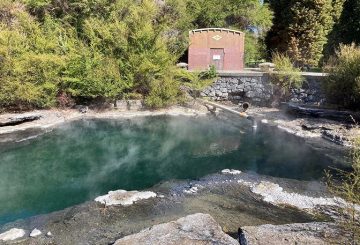마나와헤의 농부인 브렌트 마운트포트 (Brent Mountfort) 는 270헥타르 규모의 농장 중 거의 절반을 보호 구역으로 탈바꿈시켜 30,000그루가 넘는 토종 나무를 심었습니다.이 이니셔티브는 토이 모아나 베이 오브 플렌티 지역 위원회와 협력하여 생물 다양성을 향상시키고 주변 환경을 개선하는 것을 목표로 합니다.
주로 쇠고기와 양을 기르는 마운트포트의 농장은 언덕이 많은 마나와헤 지역의 마타타 (Matatā) 위에 위치해 있습니다.지난 30년 동안 마운트포트와 그의 가족은 지역 위원회와 협력하여 농장에 환경 친화적인 변화를 시행해 왔습니다.
마운트포트는 지역 위원회와 함께 환경 프로그램 (EP) 에 참여하고 있는 수백 명의 지역 토지 소유자 중 한 명입니다.EP는 이사회와 토지 소유자 간의 협력 계획으로, 생물 다양성을 보호 및 복원하고, 토양을 보존하고, 수질을 개선하기 위한 조치를 요약합니다.이러한 계획은 개별 토지 소유자뿐만 아니라 전체 지역사회에도 혜택을 줍니다.
보존에 대한 마운트포트의 열정은 그의 부모인 앙투아네트와 크리스에게서 비롯됩니다.앙투아네트는 이전에 자연보호부에서 일하면서 가족과 지역 협의회와 오랜 관계를 맺기 시작했습니다.
마운트포트는 지역위원회 및 QEII 내셔널 트러스트 (QEII National Trust) 와 협력하여 침식이 발생하기 쉬운 토지를 차단하고 다시 심는 프로젝트를 최근에 진행했습니다.지역위원회가 환경부의 공공 수로 및 생태계 복원 기금을 통해 공동 자금을 지원하는 이 프로젝트는 이 지역의 담수 수질에 장기적으로 도움이 될 것으로 예상됩니다.
마운트포트 (Mountfort) 는 비슷한 토지 변화를 고려하고 있는 다른 기업들에게도 천천히 진행하라고 조언하면서 이렇게 말합니다. “변화는 아주 오랜 시간에 걸쳐 일어납니다.한 번에 모든 것을 할 필요는 없습니다. 그냥 무언가를 하면 됩니다.”



















































-360x245.jpg)










